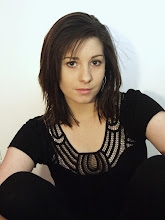David Carson is principal and chief designer of David Carson Design, Inc. with offices in New York City and Charleston, SC.
Carson graduated with "honors and distinction" from San Diego state university, where he received a BFA degree in sociology. A former professional surfer, he was ranked #9 in the world during his college days. Numerous groups including the New York Type Directors Club, American Center for Design and I.D. magazine have recognized his studio's work with a wide range of clients in both the business and arts worlds. Carson and his work have been featured in over 180 magazine and newspaper articles around the world, including a feature in Newsweek magazine, and a front page article in the new york times . London-based Creative Review magazine dubbed Carson "Art Director of the Era." The American Center for Design (Chicago) called his work on Ray Gun magazine "the most important work coming out of America." His work on Beach Culture magazine won "Best Overall Design" and "Cover of the Year" from the Society of Publication Designers in New York.
Carson's first book, with Lewis Blackwell, The End of Print, (forward by David Byrne) is the top selling graphic design book of all time, selling over 200,000 copies, and printed in 5 different languages. The work featured in The End of Print is the subject of various one-man exhibitions throughout Europe and Latin America, Asia and Australia. Carson's other titles include 2nd Sight, Fotografiks (with design historian Philip Meggs). He has two recently released books, TREK and The Book of Probes with Marshall McLuhan. David is also art director for the Mcluhan estate("the medium is the message").
Carson lectures extensively throughout the world, as well as at colleges throughout the U.S., including Cranbrook, ARTcenter, Notre dame, RISD and Cal Arts. he has had numerous one man exhibitions of his work worldwide, and has spoken at over 100professional symposiums, including "Designer As Editor" at the Design Institute in Amsterdam. He teaches a week long workshop at the school of visual arts in NYC each summer.
The International Center for Photography (NY) singled out Carson as the "Designer of the Year" for his use of photography and design. Print Magazine proclaimed his work "Brilliant," while USA Today described it as "visually stunning," adding that his design of Ray Gun Magazine "may actually get young people reading again.
"Typography, a title published by Graphis magazine (NY), lists Carson as a "Master of Typography." I.D. magazine chose Carson for their list of "America's most innovative designers". A feature in Newsweek magazine said of Carson "he changed the public face of graphic design". The graphic design publication Emigre devoted an entire issue to Carson, the only American designer to be so honored in the magazine's history. And in April 2004, London based creative review magazine calls David, "the most famous graphic designer on the planet". David recently picked up 4 gold awards at the Charleston ADDY awards, including a "special judges award" for "professionalism".
In the past few years, Carson has branched out into film and television to direct commercials and videos. He directed the launch commercials for Lucent technologies and teamed up with William Burroughs in Carson's short film, "The End of Print". He also collaborated with Harvard Business School professor John Kao on a documentary entitled "The Art and Discipline of Creativity." David designed the worldwide branding campaign for Microsoft in 1998, as well as the worldwide advertising for Giorgio Armani (Milan). He has appeared in advertisements endorsing Apple Computers, Samsung monitors and various paper companies. Carson has art directed and designed Surfer, twSkateboarding, twSnowboarding, Beach Culture, and Ray Gun magazines. He has an extensive list of international clients: Nine Inch nails, Toyota, Mercedes Benz, Bank of Montreal, Microsoft, Quiksilver, Meg Ryan, David Byrne, Bush, Pepsi, and Xerox.
David is featured in both "The History of Graphic Design" by Philip Meggs, as well as"The Encyclopedia of Surfing" by Matt Warsaw.
He currently serves as Creative Director for the Gibbes Museum of Art in Charleston, and recently designed a special issue of Surfing Magazine titled "Explorations" which came out in July of '04. He also recently directed a television commercial for the progressive UMPQUA Bank in Seattle, Washington.
David's work continues to be subjective and largely driven by intuition, with an emphasis on reading material before designing it, and experimenting with ways to communicate in a variety of mediums. Carson remains a hands on designer, keeping his studio small and mobile.
Neville Brody studied graphic design at the London College of Printing from 1977 until 1980. In the early 1980s Neville Brody became art director at Fetish Records. Belonging to the fringe music scene, Neville Brody experimented with new typefaces, informed by ideas drawn from the subculture. Neville Brody mixed fonts, ignored typeface sizes and standard distances between lines, interspersing fonts with decorative elements. From 1981 until 1986 Neville Brody was art director at "The Face" magazine, for which he designed a distinctive typography that inspired magazine producers and designers worldwide. From 1983 until 1987 Neville Brody designed the London program magazine "City Limits" and also worked for such widely differing magazines as "New Socialist", "Touch", and "Arena". In 1992 Neville Brody designed the image and branding for the House of Cultures in Berlin. In 1992/93 Neville Brody created the image of the Austrian television channel ORF and, from 1991 to 1994 the private channel Premiere. In 1994 Neville Brody founded Research Studios in London with branches worldwide. In 1992 Research Studios designed postage stamps for PTT, the Netherlands postal service and, in 1994, created the image of the Schauspielhaus, a theater in Hamburg. From 2000 to 2002 Research Studios worked for Issey Miyake New York and, in 2004, for the Royal Court Theatre in London. Neville Brody designed several fonts, including Blur, Gothic, Pop, and Six. As early as 1988 the Victoria & Albert Museum in London mounted a retrospective of Neville Brodys work.

0 comments:
Post a Comment